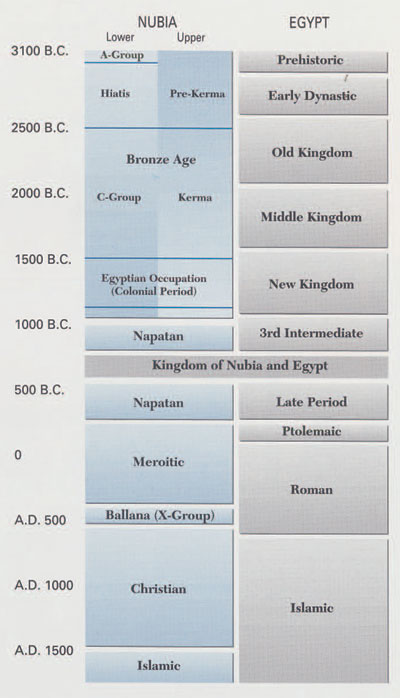
Ancient Nubia occupied a vast region just south of ancient Egypt, a region lying partly in Egypt but mostly in the Sudan. We tend to think of Egypt as the greatest ancient power on the African continent. Her gigantic pyramids and temples overshadow, at least in scale, the achievements of other early African cultures. However, Nubia’s less grandiose civilization was actually the product of a series of aggressive kingdoms that at times equaled and even surpassed Egypt in power. Nubia deserves to be more widely understood as the vigorous and independent civilization that it was.
Unlike Egypt, Nubia remained largely unexplored by archaeologists until the 20th century. The University Museum played an early and major role in exposing Nubia’s lengthy and complex history, with surveys and excavations carried out in 1907-1910 and in 1962-1963. As a result, the Museum has built up one of the most important collections of Nubian art and archaeology in the world. The most recent product of our continuing interest in the area is the traveling exhibit Ancient Nubia, Egypt’s Rival in Africa, curated by Dr. David O’Connor and now on national tour.
Like the exhibit itself, this thematic issue of Expedition Magazine explores the origins and special character of Nubia’s diverse and sophisticated civilization over a period of more than three millennia. The five articles, each with its own topic and point of view, were originally presented in a public symposium at The University Museum in November of 1992. We are grateful to all the authors for their cooperations in putting together this special issue and to Dr. O’Connor for acting as Issue Advisor. We are also grateful to the National Endowment for the Humanities and the Pew Charitable Trust for making the exhibit and the symposium possible.
